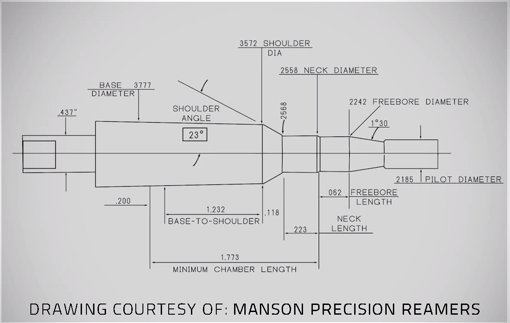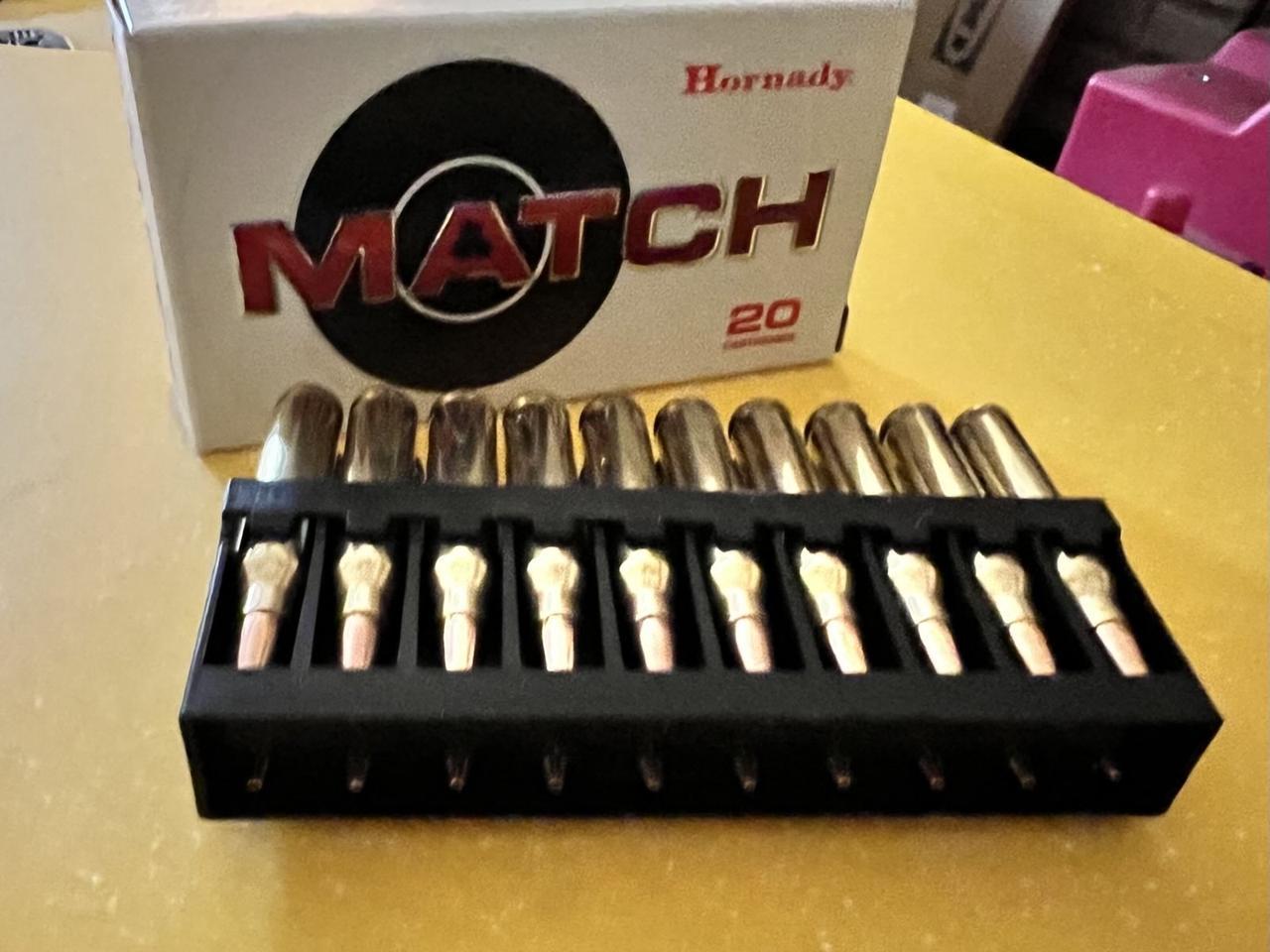.223 Wylde Chambering

The .223 Remington cartridge has been a staple in the shooting community for decades, known for its accuracy, reliability, and versatility. Chambered in a wide range of rifles, from hunting to competition firearms, the .223 Remington has earned a reputation as a go-to choice for precision shooting. However, within the world of .223 Remington chamberings, there exists a lesser-known variant that offers unique benefits: the .223 Wylde.
One of the key advantages of the .223 Wylde is its ability to safely fire 5.56x45mm NATO cartridges, which are often used by military and law enforcement agencies. The .223 Wylde's chamber dimensions and throat design allow for a more optimal performance with these higher-pressure cartridges, making it an attractive option for shooters who need or prefer the NATO round. In contrast, traditional SAAMI-spec (Sporting Arms and Ammunition Manufacturers' Institute) .223 Remington chambers may not be suitable for firing 5.56x45mm NATO ammunition due to potential pressure issues.
This article aims to explore the .223 Wylde chambering in depth, examining its history, technical specifications, and performance advantages when firing both .223 Remington and 5.56x45mm NATO cartridges. We'll also touch on alternative calibers, such as the .223 WSSM (Winchester Super Short Magnum) and the .224 Valkyrie, to provide a comprehensive understanding of the options available to shooters seeking precision and accuracy.
Technical Specifications
- Chamber dimensions: The .223 Wylde has a longer chamber than the standard SAAMI-spec .223 Remington, with a total length of 1.465 inches (37.3 mm) compared to 1.435 inches (36.5 mm) for the SAAMI spec.
- Freebore length: The freebore length is increased to 0.050 inches (1.27 mm), allowing for smoother bullet seating and reduced pressure spikes.
- Throat angle: The throat angle is increased to 40 degrees, providing a more generous angle for bullet seating and improved accuracy.
- Neck diameter: The neck diameter is slightly larger than the SAAMI spec, measuring 0.252 inches (6.4 mm) compared to 0.251 inches (6.38 mm).
- Overall cartridge length: The overall cartridge length remains the same as the standard .223 Remington, at 2.260 inches (57.4 mm).
By delving into the world of .223 Remington chamberings, we hope to shed light on the benefits and applications of the .223 Wylde, providing valuable insights for shooters looking to optimize their performance.
The .223 Remington cartridge has a rich history, dating back to its development in 1957 as a varmint hunting round by Remington Arms Company. Its popularity grew rapidly, and it soon became a staple in the shooting community. However, as shooters began to experiment with the cartridge, they discovered that the standard SAAMI-spec chamber dimensions were not ideal for achieving optimal accuracy.
Enter Bill Wylde, a renowned gunsmith and shooter who recognized the potential of the .223 Remington cartridge. In 2002, Wylde developed the .223 Wylde chambering, which was designed to unlock the full potential of the .223 Remington while also allowing it to safely fire 5.56x45mm NATO cartridges.
Wylde's design goals were centered around achieving improved accuracy and consistency, as well as increased durability and reliability. To achieve these objectives, he modified the standard SAAMI-spec chamber dimensions, incorporating a longer freebore and a more generous throat angle. This design change allowed for smoother bullet seating, reduced pressure spikes, and improved barrel life. The .223 Wylde chambering was born, offering shooters a high-performance alternative to traditional .223 Remington chamberings.
In comparison to other .223 Remington chamberings, the .223 Wylde offers improved accuracy and reliability due to its optimized chamber dimensions and freebore length. The NATO chambering, for example, has a shorter freebore length and smaller throat angle than the .223 Wylde, which can result in reduced accuracy and increased pressure spikes.
The .223 Wylde chambering offers several benefits that make it a popular choice among shooters and rifle builders. One of the primary advantages is improved accuracy and consistency. The longer freebore and more generous throat angle allow for smoother bullet seating, which can result in reduced pressure spikes and increased accuracy.
.223 Remington

Another benefit of the .223 Wylde is reduced throat erosion. The optimized chamber dimensions and freebore length help to reduce the stress on the barrel throat, which can lead to a decrease in wear and tear over time. This can result in increased barrel life, making the .223 Wylde a more cost-effective option in the long run.
The .223 Wylde is also better suited for heavier bullets, such as those used in competition shooting or hunting applications. The chambering's ability to safely handle these heavier loads makes it an ideal choice for shooters who require a high degree of accuracy and reliability.
Overall, the .223 Wylde offers a number of benefits that make it an attractive option for shooters who require high accuracy and reliability. Its optimized chamber dimensions and freebore length can result in improved performance and increased barrel life, making it a popular choice among rifle builders and enthusiasts alike.
The .223 Wylde is just one of several alternative .223 calibers available on the market. Here, we'll take a brief look at some other options:
- .223 WSSM (Winchester Super Short Magnum): The .223 WSSM is a high-velocity cartridge that uses a shorter case length to achieve faster muzzle velocities. While it offers impressive ballistics, its short case can make reloading more difficult.
- .224 Valkyrie: The .224 Valkyrie is another high-performance .224 caliber cartridge designed for long-range shooting. It has a longer case length than the .223 WSSM and is known for its flat trajectory and high accuracy.
- .223 AI (Ackley Improved): The .223 AI is an improved version of the standard .223 Remington, with a slightly larger case capacity and a 30-degree shoulder angle. It offers improved performance over the standard .223 Remington, but may not match the ballistics of the other two alternatives.
While the .223 WSSM and .224 Valkyrie may boast impressive ballistics and high muzzle velocities, the .223 Wylde offers a unique set of benefits that make it an attractive option for shooters who prioritize accuracy, versatility, and durability. One of the primary advantages of the .223 Wylde is its improved accuracy, which can be attributed to its optimized chamber dimensions. The carefully crafted freebore length and throat angle allow for smoother bullet seating and reduced pressure spikes, resulting in tighter groups and more consistent performance. Additionally, the .223 Wylde is better suited for heavier bullets, making it an ideal choice for shooters who require a high degree of accuracy at longer ranges or with larger game. The chambering's ability to safely handle these heavier loads also makes it an excellent option for those who want to experiment with different bullet weights and styles without worrying about sacrificing performance. Furthermore, the .223 Wylde's optimized chamber dimensions also contribute to increased barrel life due to reduced throat erosion. By minimizing the stress on the barrel throat, the .223 Wylde can help extend the lifespan of the barrel, reducing wear and tear over time. This not only saves shooters money in the long run but also provides peace of mind, knowing that their rifle will continue to perform at a high level for years to come. Overall, while the .223 WSSM and .224 Valkyrie may offer impressive ballistics, the .223 Wylde's unique combination of improved accuracy, better compatibility with heavier bullets, and increased barrel life make it an excellent choice for shooters who prioritize performance, versatility, and durability.
5.56x45mm NATO

When it comes to practical applications and considerations, there are several key factors that shooters should take into account when deciding whether a .223 Wylde rifle is right for them. One of the most important considerations is barrel selection. Shooters will need to ensure that they select a high-quality barrel that is compatible with their specific rifle platform. Additionally, if the barrel becomes worn or damaged, replacement may be necessary, which can add to the overall cost of ownership. Another practical consideration is bullet compatibility and seating depth. The .223 Wylde chamber is designed to work well with a wide range of bullets, but shooters will still need to ensure that they select ammunition that is loaded to the correct specifications for their rifle. Reloading considerations are also important factors to consider when choosing a .223 Wylde rifle. Shooters who plan to reload their own ammunition will need to take into account the specific requirements of loading .223 Remington ammunition, such as case length and neck tension, in order to function reliably and accurately in the rifle. Finally, cost and availability of ammunition and components is another key consideration. While the .223 Wylde chamber offers many advantages in terms of performance and accuracy, it may require shooters to seek out specific loading data or components that are optimized for this chamber design.
The .223 Wylde chambering offers a unique combination of benefits and performance that make it an attractive option for shooters seeking to optimize their rifle's accuracy and reliability. By providing a longer throat length than traditional .223 Remington chambers, the .223 Wylde allows for more consistent bullet seating and improved accuracy across a wide range of loads and bullet weights. While there are practical considerations to take into account when choosing a .223 Wylde chambered rifle, such as barrel selection and reloading requirements, these factors can be easily managed with proper planning and attention to detail. For shooters seeking a high-performance, accurate, and reliable rifle for varmint hunting, target shooting, or tactical applications, the .223 Wylde chambering is certainly worth considering.

